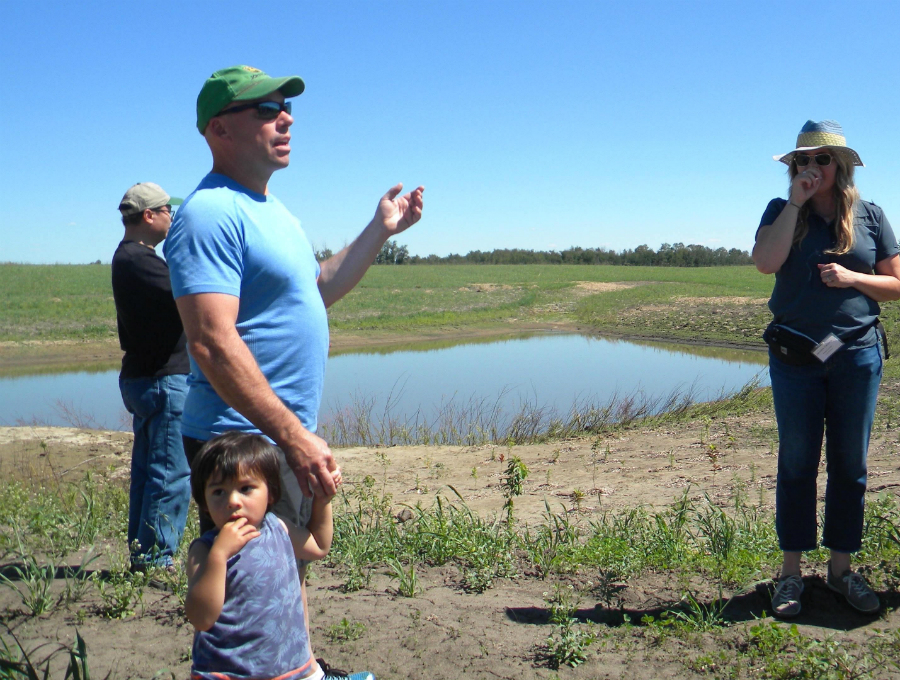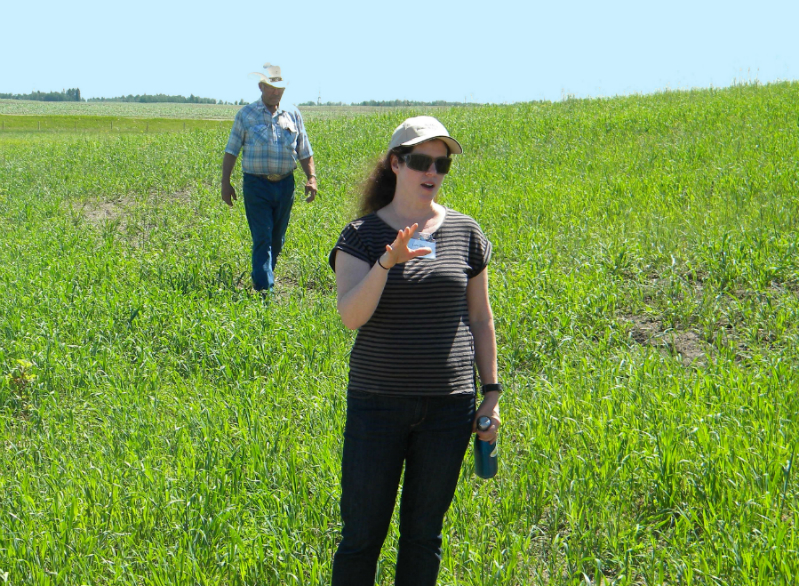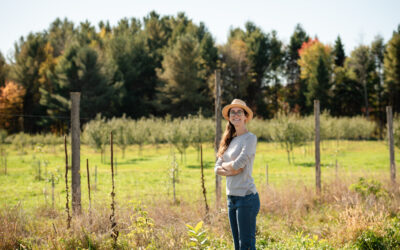Alberta Environment and Parks and partner agencies joined ALUS for a special tour of ALUS Parkland projects in the Modeste subwatershed.

In June 2018, ALUS invited a group of Alberta’s governmental decision-makers and partner agencies to visit four ALUS projects in Parkland County, west of Edmonton.
In June 2018, ALUS invited a group of Alberta’s governmental decision-makers and partner agencies to tour ALUS projects in Parkland County that are having a positive effect on the wider community.
ALUS welcomed 25 special guests from Alberta Environment and Parks (AEP), Alberta Agriculture and Forestry (AF), the Alberta Riparian Habitat Management Society (Cows and Fish), the Agri-Environmental Partnership of Alberta (AEPA), the North Saskatchewan Watershed Alliance (NSWA), the University of Guelph, EPCOR (Edmonton’s power and water utility) and Viresco Solutions, an environmental consulting firm specialized in mainstreaming sustainability.
Led by ALUS Parkland program coordinator Jennifer Caudron, the tour visited four ALUS project sites in Parkland County, west of Edmonton. All these projects are located in the Modeste subwatershed of the North Saskatchewan River basin, where the AEP’s Watershed Resiliency and Restoration Program (WRRP) is helping ALUS Canada, in partnership with ALUS Parkland, ALUS Brazeau, and ALUS Wetaskiwin-Leduc, to enhance 650 acres for the purpose of flood and drought mitigation and water quality improvements over the next three years. Read more about this initiative here: https://alus.ca/alus_news_and_events/alus-granted-720k-flood-prevention-alberta/

The first two stops on the AEP tour were both located at Greanya Farm, an idyllic and pastoral livestock operation owned by Eldon Greanya, Chair of ALUS Parkland’s Partnership Advisory Committee (PAC).
The first two stops on the AEP tour were both located at Greanya Farm, an idyllic and pastoral livestock operation owned by Eldon Greanya, Chair of ALUS Parkland’s Partnership Advisory Committee (PAC). ALUS is helping Greanya protect his wetlands with wildlife-friendly fences, which prevent his cattle from drinking directly from the wetlands and causing damage to the sensitive riparian zone and surrounding forested area. It was clear to all that ALUS projects not only produce the ecosystem services of cleaner water and cleaner air, but also help increase biodiversity: The calls of red-winged blackbirds and the flutter of butterflies provided a harmonious soundtrack at the first stop on the tour, while a doe and her fawn leaped through the area during the second stop.
The Greanyas have also undertaken ALUS projects that protect water quality in a creek that flows into their neighbours’ property, Tomahawk Cattle Ranch. The AEP tour followed this creek onto the largest ranch in Parkland County, containing over 50 quarter sections (14,000 acres). Owned by Western Ranchlands Corporation, Tomahawk Cattle Ranch is managed very carefully by ALUS Parkland PAC member Gerry Taillieu, who won the 2016 ALUS Canada Producer Innovation Award for his outstanding commitment to land stewardship producing ecological services through the ALUS program.
“We can make really big improvements on our land with the right kind of fencing, the right kind of water system, and science,” said Taillieu, “and from our own experience, we know that when we do a better job of managing the grass, we see more wildlife as well.”

At an ALUS project on Western Ranchlands Tomahawk Ranch, managed by ALUS participant Gerry Taillieu (centre), ALUS Parkland Program coordinator Jennifer Caudron (left) and Parkland County’s Manager of Community Sustainability Krista Quesnel (right) help Taillieu present the ALUS projects on this site.
Taillieu showed the tour group one of the first ALUS Parkland projects ever undertaken, a stream that was protected with a wildlife-friendly cattle fence in 2012. The benefits became crystal clear almost immediately but now, six years later, the undisturbed riparian vegetation is even more impressive. This ALUS project serves to filter runoff water flowing into the creek, thus reducing turbidity and the risk of microbial contamination in the creek water, which eventually flows into the City of Edmonton where millions of people rely on clean drinking water.
The final stop on the AEP tour was a wetland owned by new and innovative ALUS participants Maria and Darren Smith. The previous landowners had drained the area to create cropland, but the Smiths worked with ALUS to re-construct and enhance the former wetland. They have surrounded the new wetland with a wide variety of native plant species, to filter field runoff, capture carbon and provide wildlife habitat. Plants were carefully selected for their potential to withstand the effects of climate change, for the best chance of continued success in the years to come.

“We want to use this land as efficiently as possible for multiple agricultural practices, including pasture for cattle and pigs, a flower farm, a greenhouse, edible fruit trees and a hay field, while also producing ecological goods and services through ALUS,” explained Darren Smith, an ALUS Parkland participant.
The Smith Farm is buzzing with potential. “We want to use this land as efficiently as possible for multiple agricultural practices, including pasture for cattle and pigs, a flower farm, a greenhouse, edible fruit trees and a hay field, while also producing ecological goods and services through ALUS,” explained Darren.
“Overall, I think the ALUS Wetland Enhancement Tour deepened participants’ understanding of how ALUS can achieve land-use planning objectives and satisfy mitigation requirements under the Alberta Wetland Policy,” said Christine Campbell, ALUS Canada’s Western Hub Manager, “as well as how partnerships could be deepened between organizations to support natural infrastructure projects in the province.”
The AEP tour group saw first-hand how ALUS can provide real solutions to some of the most daunting environmental problems facing Canadian communities, such as the devastating floods that are becoming increasingly prevalent in many parts of Canada. All these ALUS projects serve to improve local wetland and riparian areas, which provide natural infrastructure and ecosystem services for the community such as mitigating floods and droughts and helping downstream municipalities provide cleaner drinking water for their citizens.

During the AEP tour, ALUS Canada’s Director of Strategic Initiatives, Lara Ellis, describes the type of ALUS projects that will be funded over the next three years by a WRRP grant, which will help ALUS enhance 650 acres for the purpose of flood and drought mitigation and water quality, and will support scientific research to assess and model the economic costs and benefits of natural infrastructure in the Modeste subwatershed.



